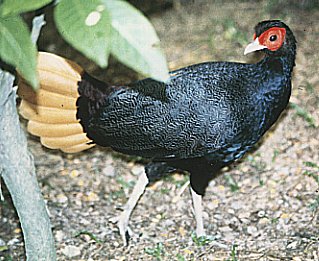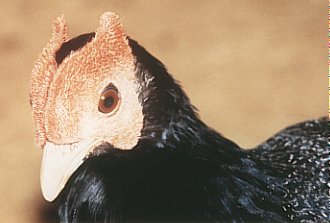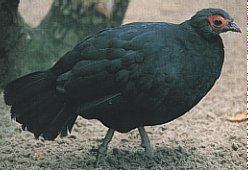
Courtesy of the World Pheasant Association |
Name: Crestless Fireback Pheasant |
| Scientific name: (Lophura erythropthalma) | |
| Range: Malayan Peninsula, Sumatra and Borneo | |
| Habitat: Tropical forests | |
| Status: Not known. | |
| Diet in the wild: Fruit, grains, and worms | |
| Diet in the zoo: Omnivorous and eats worms and insects | |
| Location in the zoo: Lower section of the Bird walk.(to the right) |


